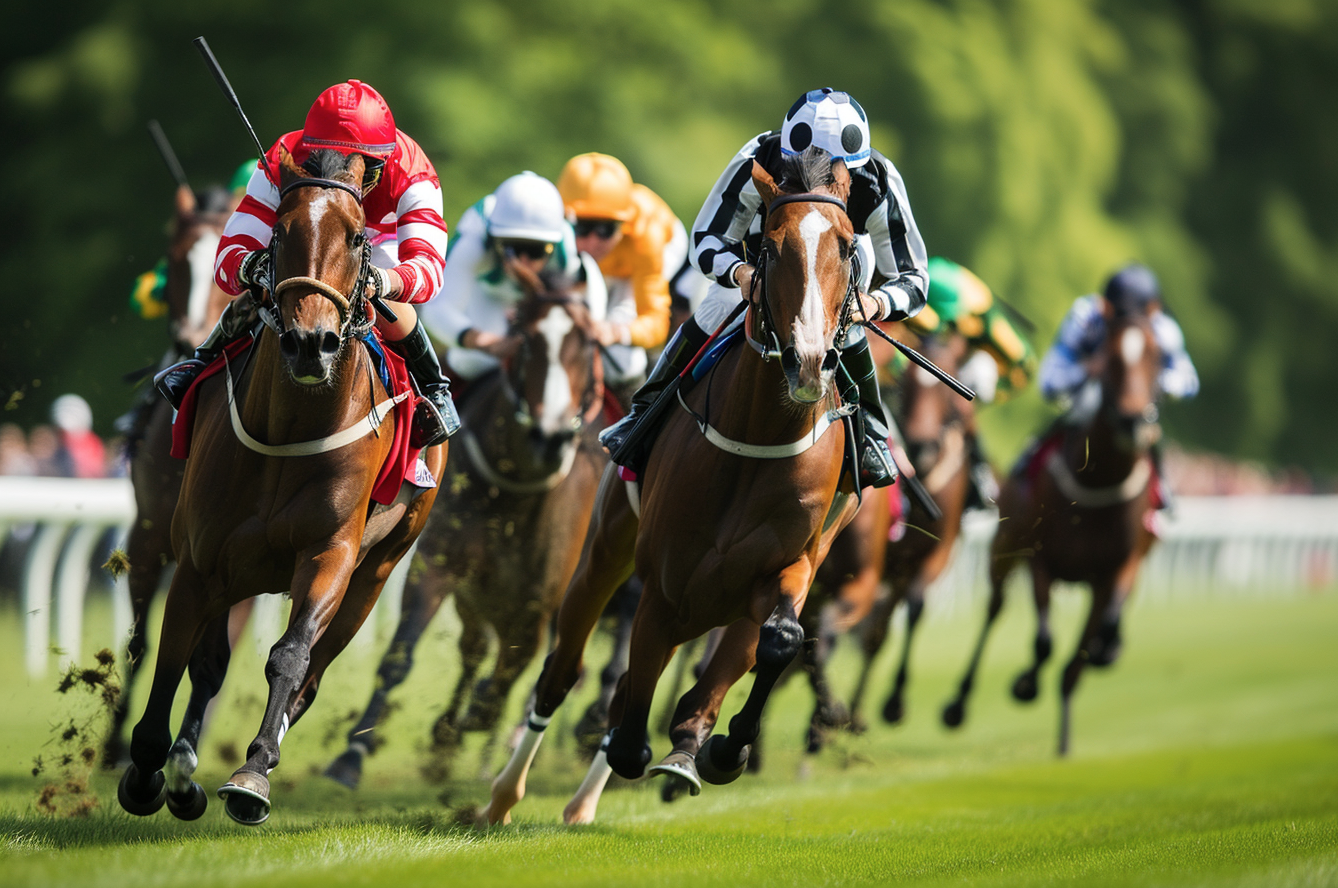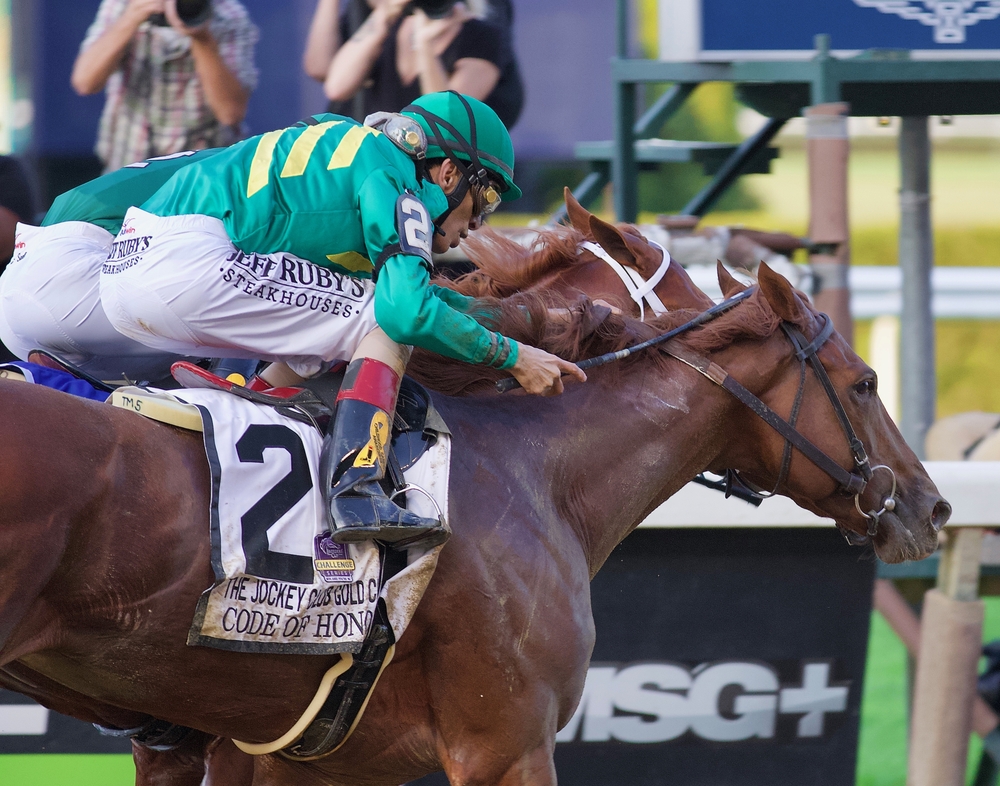In the world of horse racing, accurately assessing the condition of the track is pivotal to the safety and performance of the horses and their riders. To that end, the Going Stick has become an indispensable tool. It provides a more objective and quantifiable method for measuring track conditions, often known as the ‘going’. By gauging both the ease of ground penetration and the level of resistance experienced when pulling the instrument at an angle, the Going Stick offers valuable data on the firmness and moisture content of the track.
Understanding the readings from the Going Stick is vital for all stakeholders in horse racing, from trainers and jockeys to racing enthusiasts and bettors. The device assesses two key factors: penetration, which reflects the force needed to push the tip into the ground, and shear, which measures the energy required to pull the stick back to a 45-degree angle. These metrics closely replicate the impact and traction that a horse’s hoof experiences during a race, making the readings crucial for race preparations and strategies. As ground conditions play a significant role in the outcome of races, the Going Stick helps ensure a level playing field by providing consistent and transparent going reports.
Key Takeaways
- The Going Stick measures track conditions by testing ground penetration and shear resistance.
- Accurate going assessments inform race strategies and protect horse and rider welfare.
- Consistent use of the Going Stick aids in maintaining fairness and safety in horse racing.
Overview of the Going Stick
The Going Stick is an instrument designed to assess the condition of turf on racecourses, providing essential data to ensure the safety and welfare of racehorses. Its use brings an objective approach to the measurement of the ground’s attributes.
History and Development
Developed in collaboration with Cranfield University and TurfTrax, the Going Stick emerged as a revolutionary device intended to provide a more objective and consistent measure of the going on horse racing grounds. Previously, the going was assessed subjectively by officials, yet the introduction of the Going Stick allowed for a numerical reading to be obtained, reflective of the ground’s condition.
Design and Functionality
The Going Stick is a hand-held device that quantifies two main aspects: the force required to penetrate the turf and the force necessary to pull it at an angle, simulating the action of a racehorse’s hoof. The device comprises a GPS for location accuracy and records the penetration (force to push the tip into the ground) and shear (energy to pull back at a 45-degree angle). These measurements are combined to provide an objective going reading.
- Force required for penetration (measured in kilograms)
- Shear force (measured at a 45-degree angle)
- GPS for accurate location tracking
Role and Importance in Horse Racing
The primary role of the Going Stick is to enhance the safety and welfare of racehorses by offering an objective assessment of racecourse conditions. It serves as a crucial tool for trainers, jockeys, and betting entities to make informed decisions regarding their race strategies and selections. By providing consistent and accurate readings, the Going Stick aids in the standardisation of going reports across different racecourses.
Operation of the Going Stick
The Going Stick is a device designed for providing an objective assessment of the ground conditions at a racecourse. It delivers numerical readings that offer a consistent and calibrated measure of the track’s condition.
Conducting Measurements
To initiate a measurement, the clerk of the course pushes the Going Stick into the racing surface. The device functions as a penetrometer, gauging the resistance to vertical penetration – how much force is needed to push the stick into the ground. It also measures shear, requiring the device to be pulled back at a 45-degree angle, which simulates the action of a horse’s hoof striking the surface.
Reading and Interpreting Data
Once inserted into the track, the Going Stick records the forces exerted and then calculates an average reading based on these values. This data is expressed on a scale that typically ranges from 0 to 15, where each number corresponds to a specific condition descriptor, like ‘Hard’ or ‘Soft’. These readings provide an objective data point beyond subjective human touch.
Factors Affecting Going Stick Readings
Numerous environmental factors can influence the readings of the Going Stick. Weather conditions including sun and rain can alter ground conditions significantly, affecting the device’s measurements. Therefore, it’s crucial that the device undergoes regular calibrations to ensure accuracy and reliability. Ground conditions can change throughout the day, hence multiple assessments may be taken to track these variations.
Understanding Going Descriptions
In horse racing, the ‘going’ refers to the condition of the turf on the racecourse, which is crucial information for trainers, jockeys, and punters. The GoingStick is a device used to measure these conditions and provide an objective going description.
Scale and Calibration
The GoingStick provides a numerical reading that quantifies the state of the track surface. This reading is achieved through a scale that assesses the penetration (how much force is needed to push the stick into the ground) and shear (the energy required to pull it back to a 45-degree angle). The calibration of the device ensures that its readings remain consistent and accurate over time, offering a systematic way to compare the going across different racecourses.
| GoingStick Value | Description |
|---|---|
| Below 5.0 | Heavy |
| 5.0 – 6.4 | Soft |
| 6.5 – 7.4 | Good to Soft |
| 7.5 – 8.4 | Good |
| 8.5 – 9.4 | Good to Firm |
| Above 9.5 | Firm |
Terminologies: Soft to Hard
The going descriptions range from Heavy to Hard, indicating the increasing firmness of the ground. A Heavy track is typically saturated, making it slow and difficult to run on, often resulting from prolonged periods of wet weather. Soft suggests slightly less moisture but a significant give underfoot. Good to Soft indicates some moisture present, offering less bounce than drier conditions. A Good rating typically points to ideal racing conditions where the turf is neither too wet nor too dry. Good to Firm conveys a slightly harder ground that favours horses that perform well on faster tracks. Lastly, a Firm ground suggests very dry conditions, making for a fast track, while Hard is rarely used and denotes extremely dry, often the result of extended periods of dry weather. These descriptions provide a standard by which all participants can assess the relative condition of the turf.
Impact of Ground Conditions
The ground conditions, often referred to as “the going”, play a pivotal role in determining race outcomes. They directly influence horse performance and necessitate strategic adjustments by trainers and jockeys on race day.
Effects on Horse Performance
Ground conditions range from heavy to firm and have a profound effect on a horse’s ability to perform. On soft ground, horses expend more energy due to increased resistance, leading to slower race times. Conversely, firm ground can enhance speed as it requires less effort for a horse to gallop. However, it can also be more taxing on their legs and lead to increased injury risk. Good ground is optimal, presenting a balance that is neither too hard nor too yielding. This is ideal for achieving peak horse performance as it allows for sustained pace without undue stress on the horse.
Influence on Race Strategies
Trainers and jockeys must adapt their race strategies to the going conditions. Variability in track surfaces across different tracks means that strategies are often altered right up until race day. In conditions deemed heavy, trainers may instruct jockeys to conserve the horse’s energy for a stronger finish, whereas on firmer surfaces, maintaining a consistent pace could be advantageous. Punters also consider the going conditions, as they significantly affect betting odds and predictions based on a horse’s known performance on similar surfaces in the past.
Track stewards provide official descriptions of ground conditions, and jockeys and trainers may adjust their decisions based on their own experience and the unique attributes of their horse, as each may have a different tolerance or preference for various types of ground.
Going Assessments in Racecourse Management
The assessment of the ‘going’ on racecourses is critical for both the safety of participants and the fairness of horse racing events. This process involves meticulous planning, reporting, and maintenance procedures overseen by the Clerk of the Course.
Clerk of the Course Responsibilities
The Clerk of the Course has a paramount role in assessing the going of a racecourse. They are responsible for providing accurate reports on the track’s condition, which is intrinsic to the safety and welfare of the horses and jockeys. The Clerk of the Course must inspect the turf, ensure consistent conditions across the course, and report findings that influence the categorisation of the going, which can range from ‘heavy’ to ‘firm’ in flat racing or jumps.
Preparation for Race Days
Before race days, the Clerk of the Course must prepare comprehensive assessments. The GoingStick—a tool designed to measure the softness or hardness of the ground—plays a vital role in this task. These readings help form a scientific understanding of the track surface, aiding the Clerk’s reports. GoingStick readings are specific to each racecourse and are most valuable when compared against historical data for that particular venue.
Maintenance of Track Surfaces
Regular maintenance of track surfaces is crucial to uphold consistent racing conditions. Racecourse ground staff work diligently to ensure the turf or all-weather tracks are in optimal condition. For turf racecourses, attention is given to the grass’s health, controlling the growth and ensuring an even running surface. On all-weather tracks, the emphasis is on preserving the synthetic surfaces, keeping them level and responsive. Proper maintenance ensures that seasonal and weather-related changes to the going are managed effectively, thereby maintaining track integrity for both flat racing and jumps.
Global Use and Comparisons
The GoingStick is a tool employed internationally to provide a consistent and objective measure of the racing surface across various countries. It has revolutionised how track conditions are reported, influencing decisions made by horsemen and punters alike.
Going Stick Use in Different Countries
- United Kingdom: The GoingStick has been a mandatory tool on British racecourses since March 2007, offering objective data on ground conditions.
- Ireland: Similar to Britain, Ireland utilises the GoingStick in assessing the condition of racetracks to inform trainers and bettors.
- Hong Kong: The Hong Kong Jockey Club is one of the international customers of the GoingStick, adopting this technology for precise track analysis.
- Australia: Both The Australian Turf Club and The Victoria Racing Club have incorporated the GoingStick in their operations to gauge track conditions.
- USA: Prestigious bodies like the California Horseracing Board and the New York Racing Association also use the technology to report track conditions.
- Dubai: The Dubai Racing Club has implemented the GoingStick to accurately measure the desert country’s unique soil types and conditions.
- France: France Galop, the governing body of French horseracing, has integrated the GoingStick into their system for consistent ground reporting.
The tool’s ability to assess various soil types, from turf to all-weather tracks, and even sand-based surfaces typical at places like Sandown, demonstrates its versatility. Each country tailors the use of the GoingStick to their specific racing environments, taking into account local weather patterns and track compositions. The device assists in creating a universal language for describing track conditions, which is particularly useful in international racing where horses and punters often cross borders.
Scientific Research and Developments
The GoingStick represents a significant technological advancement, stemming from meticulous research to ensure objective measurement in horse racing track conditions.
Independent Studies and Validation
Cranfield University played a pivotal role in the development of the GoingStick, devising a tool to provide an objective measure of the turf conditions. Research conducted by the university focused on creating a device that could quantify the firmness of the ground more accurately than subjective human assessment alone.
The tool works by measuring two key parameters: the penetration and the shear. Penetration refers to the force needed to insert the stick into the racing surface, and shear describes the energy required to pull the stick back to an angle of 45 degrees. This dual assessment method allows for a more comprehensive evaluation of the ground conditions.
In terms of data, independent studies have been imperative to the GoingStick’s validation. They confirm the device’s accuracy and reliability, comparing its readings to other subjective and objective measurement methods. These studies also assess the GoingStick’s performance in a variety of soil types and conditions to ensure its applicability across different tracks.
The comparison of its readings with experienced ground staff evaluations has highlighted its effectiveness as an objective measure, which has led to widespread acceptance within the industry. As such, it has become a standard tool used in British horse racing to describe track conditions reliably and consistently.
Challenges and Improvements
The Going Stick represents a systematic approach to measuring track conditions, shifting assessments from subjective opinions to objective data. Despite its innovative application, the device has faced several challenges, leading to enhancements that have refined its use in the horse racing industry.
Objective vs. Subjective Assessments
Subjective assessments of a racecourse’s going can be inconsistent, relying heavily on personal judgement which can vary between individuals. The introduction of the Going Stick provided a systematic, objective measurement of the conditions, quantifying the firmness and moisture content of the ground. However, overcoming resistance from traditionalists who favoured experienced-based evaluations has been an ongoing challenge. The device must consistently prove its reliability and accuracy compared to the subjective assessments of Clerks of the Courses and other industry professionals.
Advancements in Technology
Technological innovation has been integral to refining the Going Stick, making the device a more widely accepted tool. Improvements in sensor sensitivity and data analysis software have enabled the Going Stick to provide a more nuanced understanding of track conditions. Challenges remain in ensuring the device reflects the true variability of a racecourse but continued enhancements aim to increase precision. For instance:
- Upgraded calibration procedures have made measurements more reproducible.
- Introduction of GPS mapping with Going Stick data allows for a more comprehensive overview of conditions across different track sections.
These advancements demonstrate the industry’s commitment to adopting objective technologies that can support clear and confident decision-making in horse racing.
The Future of Going Assessments
The ongoing evolution of technology and environmental factors play a crucial role in shaping the future of going assessments in horse racing. These advancements have the potential to enhance the accuracy and reliability of surface condition measurements, thus influencing strategic decisions.
Emerging Technologies and Prospects
New technologies are set to revolutionise the way going conditions are assessed at racecourses. The development of sophisticated sensors and data analytics tools is likely to lead to more precise and real-time assessments of racing surfaces. Advancements in GPS and remote sensing may soon enable continuous monitoring of the racecourse, offering a comprehensive view of conditions that affect race outcomes.
Futuristic tools, such as drone technology and satellite imaging, hold promise for augmenting the data collected by tools like the GoingStick. Racecourse managers may utilise these developments to adjust surfaces in response to the immediate data feedback, thus ensuring optimal going conditions for every race.
Impact of Climate Change on Racing Surfaces
Climate change presents a considerable challenge for maintaining consistent going conditions on racing surfaces throughout the season. Increased weather volatility requires more responsive and adaptive assessment methods. Researchers and industry experts are working to understand how shifts in climate patterns will affect the racing surface.
It is anticipated that racecourses will integrate climate change projections into their maintenance schedules and assessment processes. This integration will likely involve advanced weather forecasting tools to predict racing surface conditions more accurately and to plan for extreme weather events, helping to safeguard both equine and jockey welfare during races.
Frequently Asked Questions
In horse racing, the GoingStick provides essential data on ground conditions. These questions address its functionality and role in the sport.
How is the ground firmness assessed using the going stick for horse races?
The GoingStick is inserted into the racecourse ground to measure firmness. It records the penetration, the force needed to push the tip into the soil, and shear, the energy required to pull it to a 45-degree angle.
What do the numerical readings from the going stick indicate about racing conditions?
Numerical readings from the GoingStick represent the firmness and moisture content of the track. Lower values suggest softer, potentially slower going, while higher values indicate firmer, likely faster conditions.
How do racecourse officials utilise going stick data to inform participants and spectators?
Racecourse officials use the data from the GoingStick to offer an objective assessment of the track conditions. They communicate this information to trainers, jockeys, and the public to aid in decision-making.
In what way does the going stick contribute to the safety and fairness of horse racing?
By providing accurate, consistent track readings, the GoingStick helps ensure all participants are aware of the ground conditions, contributing to both the safety of the horses and jockeys and the fairness of the race outcomes.
Can the going stick readings vary across different parts of a racecourse?
Yes, the GoingStick readings can differ across a racecourse due to variations in soil composition, grass coverage, and microclimatic conditions. Officials typically take multiple readings to get a comprehensive understanding of the track’s condition.
How often are going stick measurements updated before and during a race meeting?
GoingStick measurements are taken and updated regularly prior to and during a race meeting. This frequency ensures that the most current ground conditions are accurately reflected and available to all parties involved.





